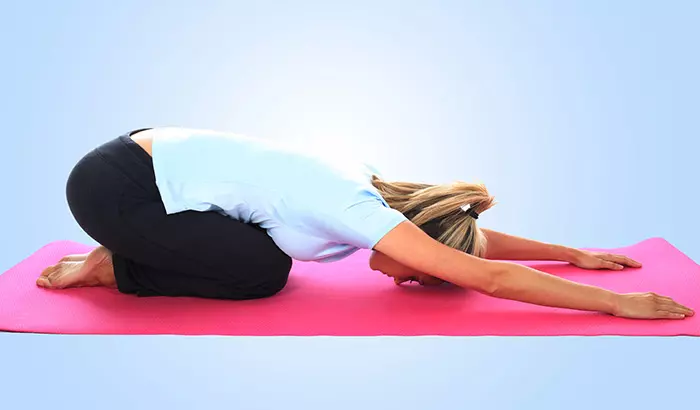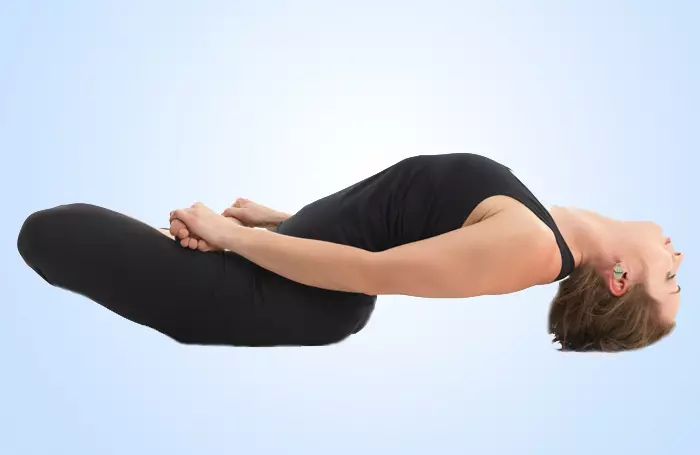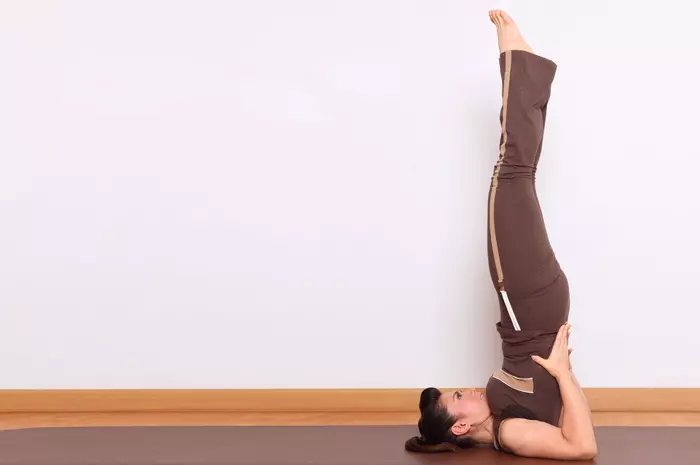Yoga For The Nervous System
Yoga asanas date back several centuries, originating in ancient India. They are a set of mindful exercises and meditation techniques that help achieve an overall balance between physical and mental well-being. All yoga asanas, or poses, are aimed at strengthening certain aspects of the body, and all of them can have a positive effect on the nervous system. Aleksa Georg, a health and mindfulness blogger, wrote about her personal experience with yoga and the many ways in which it has helped with her anxiety and fitness. She said,“I’ve learned to stand, sit, lie down, and relax in a comfortable manner. I’ve trained my nervous system and subdued my senses. I’ve undergone unbelievable self-improvement and transformation (i)!” That said, there are certain asanas that specifically aim at stimulating and enhancing the nervous system! Read on to learn more.
1. Child’s Pose (Balasana)
This pose has many benefits. It helps ease digestive processes, re-energizes the body, and stimulates the nervous system.
2. Plow Pose (Halasana)
This pose soothes the abdominal organs, strengthens and tones the back muscles, and calms the nervous system.
3. Seated Spinal Twist Pose (Ardha Matsyendrāsana)
This is one of the best yoga asanas for the nervous system that helps clear the body of toxins, provides strength to the immune system and helps stimulate the nervous system.
4. Nadi Shodhana (Alternate Nostril Breathing)
This is an effective pranayama that helps clear a blocked nose and congestion in the chest. This pose is quite good for the nervous system as well. Note: When you finish practicing the pranayama, lie down in Savasana for a minimum of 5 minutes. The Anuloma and Viloma help purify the blood and have many other health benefits. Five minutes of practicing this pose leaves you feeling fresh and rejuvenated.
5. . Down Dog Pose (Adho Mukha Svanasana)
This asana has many benefits. It stimulates WBC production and helps purge the body of toxins. Adho Mukha Svanasana also helps stimulate the nervous system.
6. Dirgha Shwasan (Deep Breathing)
This is a type of Pranayama, a kind of medication, which concentrates on using your life force or energy to cleanse the body of toxins and ailments. This exercise helps stimulate neurons and improves the oxygenation of bloodi Refers to enhanced oxygen supply to different parts of the body through the blood by means of regulated breathing. of blood. Dirgha shwasan also helps improve breathing and increase stamina. Check out how to perform this exercise in this video.
7. Reclining Bound Angle Pose (Supta Baddha Kona Asana)
This asana has many health benefits and is especially good for calming the nervous system. It is a restorative pose that passively opens the chest while quieting the mind. If you suffer from back problems, you can take support by using a raised surface or line up a couple of padded footstools. Check out how to perform Supta Baddha Konasana in this video.
8. Upside-Down Seal Pose (Viparita Karani Asana)
This asana helps stretch the back, tones the legs, improves balance, and stimulates the neurons. This asana is good for the nervous and the immune systems. It purges toxins from the body.
9. Corpse Pose (Savasana)
The corpse pose, or Savasana is a pose designed to help you recover all the energy you burnt. It is one of the best yoga poses for relaxation.
10. Happy Child’s Pose (Ananda Balasana)
The Happy Child’s Pose or the Ananda Balasana is another variation of the Balasana. Just like its cousin, Balasana helps ease digestive processes, opens the back, and soothes the mind. It also stimulates the nervous system. Check out how to perform the asana in the video.
11. Tree Pose (Vrikshasana)
The Tree Pose, or Vrikshasana, is a popular yoga pose that promotes balance, calms the nervous system, and improves concentration while strengthening various muscle groups. How does yin yoga affect the nervous system? Yin yoga is believed to tap the parasympathetic nervous systemi The PNS calms your body after a traumatic period through heart rate, blood flow, and breathing regulations. , which helps lower the heart rate and blood pressure levels. It may also relax your muscles and release endorphinsi A type of chemical that the brain releases to suppress physical pain and enhance pleasure sensations. . Can your nervous system repair itself? No. Due to the brain and spinal cord’s complexity, it is tough for the nervous system to repair itself. How do you know if your nervous system is damaged? You may experience numbness, weakness, tingling, inability to move a limb or the body, blurred vision, loss of speech, etc. Awaken your body and energize your mind! Watch the video to learn five yoga asanas to help stimulate your nervous system and feel energized. Get ready to feel refreshed and invigorated.

















